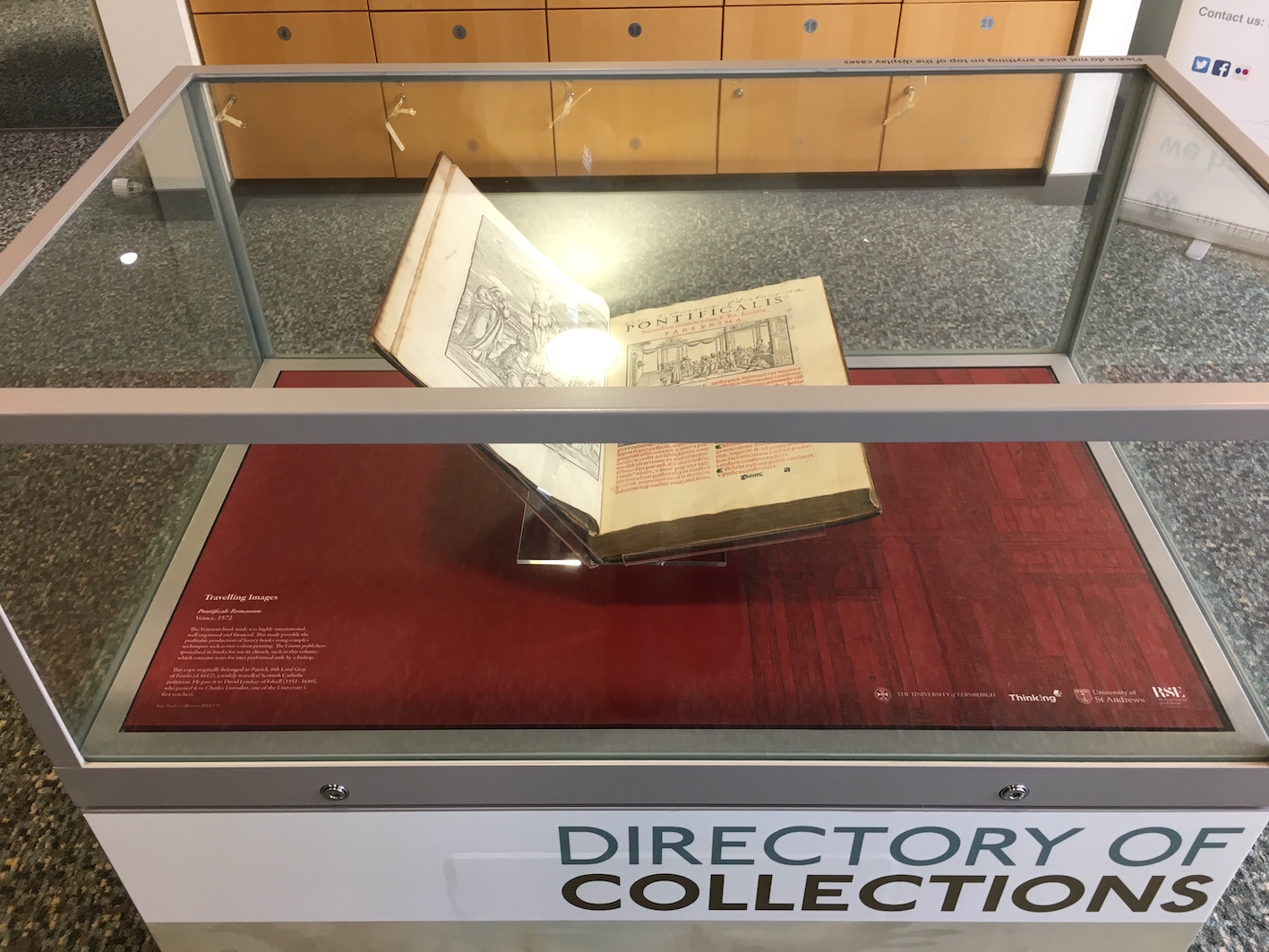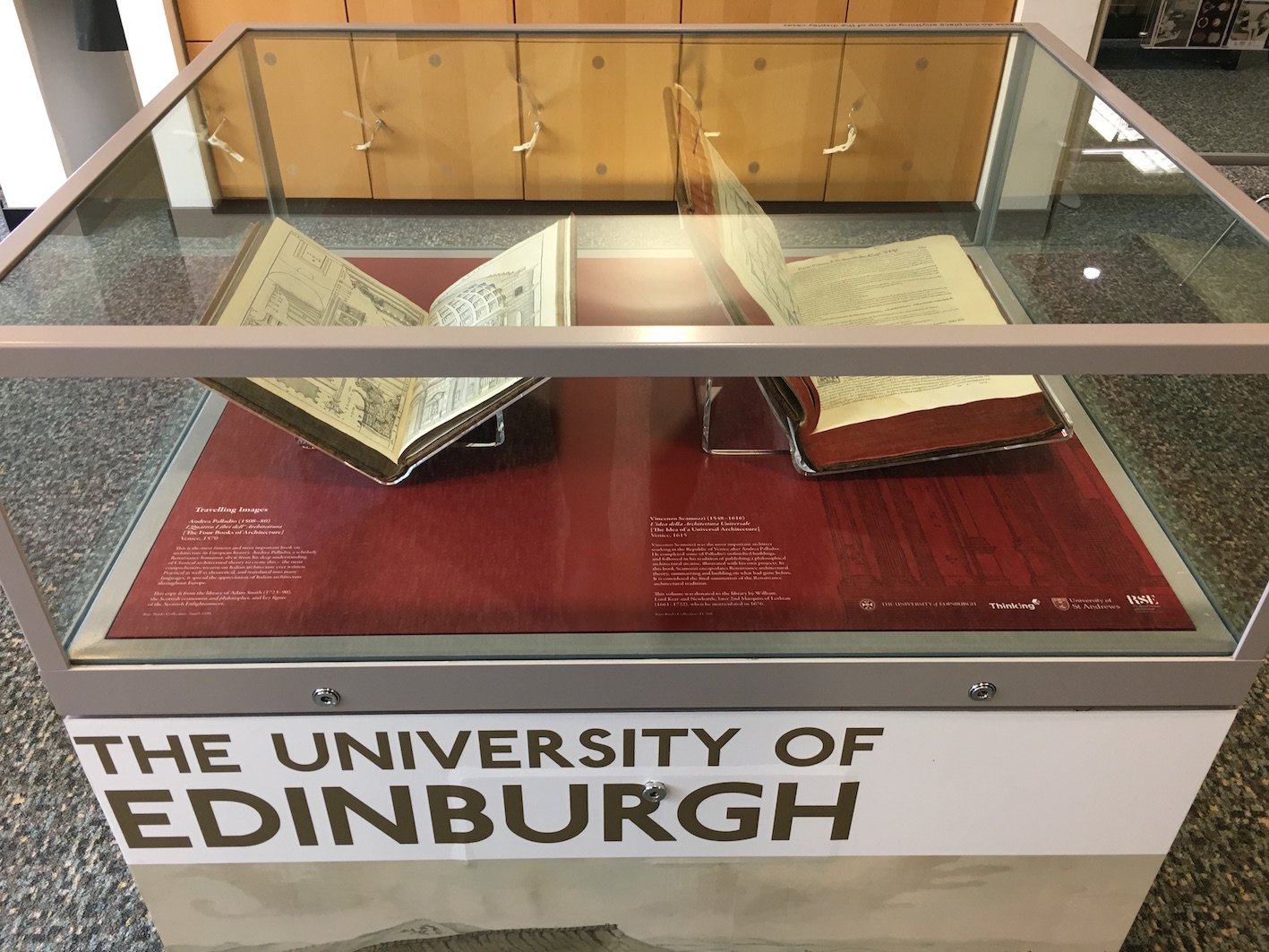Travelling Images: Venetian Illustrated Books at the University of Edinburgh
Co-curated by Dr Linda Borean (Università degli Studi di Udine) and Dr Laura Moretti (University of St Andrews), with Elizabeth Quarmby Lawrence (Centre for Research Collections, University of Edinburgh), funded by The Royal Society of Edinburgh, and supported by the School of Art History, University of St Andrews, and Thinking 3D.
During the Renaissance, Venice became one of the most important European centres for book production and trade. Writers, scholars and artists collaborated with specialised artisans, to produce books combining the highest standards of textual scholarship with the latest advances in book production technology. These often lavishly-illustrated objects contributed enormously to the spread of the knowledge and appreciation of Italian art, architecture and visual culture.
The University of Edinburgh Main Library holds a large number of books produced in Venice during this period. This exhibition presents three of these volumes. Richly and abundantly illustrated, and previously owned by individuals who played important roles in the cultural life of this country, they bear testament to the of the Venetian Renaissance on Scottish visual art and culture.

The Venetian book trade was highly international, well-organised and financed. This made possible the profitable production of luxury books using complex techniques, such as two-colour printing. The Giunti publishers specialised in books for use in church, such as this volume, which contains texts for rites performed only by a bishop.
This copy of the Pontificale Romanum originally belonged to Patrick, 6th Lord Gray of Fowlis (d.1612), a widely-travelled Scottish Catholic politician. He gave it to David Lyndsay of Edzell (1551-1610), who passed it to Charles Lumsden, one of the University’s first Regents.

I Quattro Libri dell’Architettura is the most famous, and most important book on architecture in European history. Andrea Palladio, a scholarly Renaissance humanist, drew from his deep understanding of Classical architectural theory to create this - the most comprehensive treatise on Italian architecture ever written. Practical as well as theoretical, and translated into many languages, it spread the appreciation of Italian architecture throughout Europe.
The exhibited copy is from the library of Adam Smith (1723-90), the Scottish economist and philosopher, and key figure of the Scottish Enlightenment.
Vincenzo Scamozzi was the most important architect working in the Republic of Venice after Andrea Palladio. He completed some of Palladio’s unfinished buildings, and followed in his tradition of publishing a philosophical architectural treatise, illustrated with his own projects. In this book Scamozzi encapsulates Renaissance architectural theory, summarising and building on what had gone before. It is considered the final summation of the Renaissance architectural tradition.
This volume was donated to the library by William, Lord Kerr and Newbattle, later 2nd Marquiss of Lothian (1661-1722), when he matriculated in 1676.
The curators wish to thank Kirsty Macnab (Centre for Research Collections, University of Edinburgh) and Catherine Lacroix (MLitt in Art History, University of St Andrews) for their support.
Read more about the exhibition and related event in the blog post signed by Catherine Lacroix.
